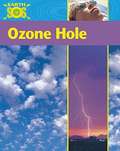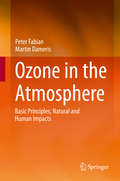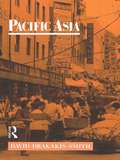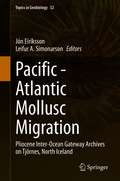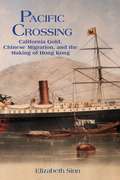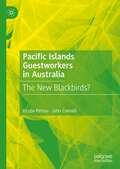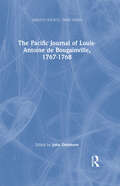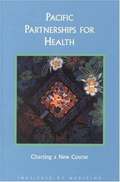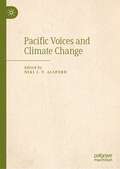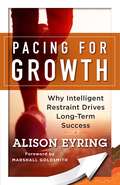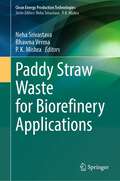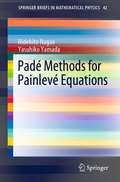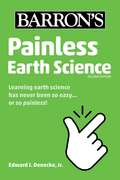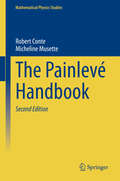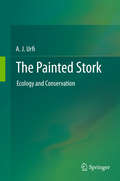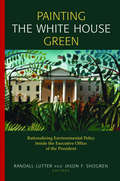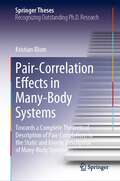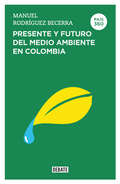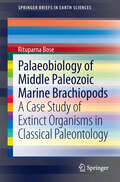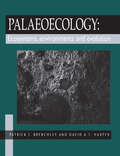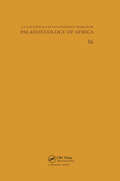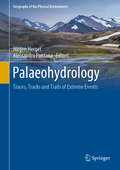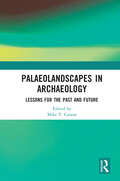- Table View
- List View
Ozone Hole (Earth SOS)
by Sally MorganOffering information at multiple levels for several reading levels, this series describes the many dimensions of the ozone hole and related problems that accompany global warming and mankind's abuse of the environment. The interdependence of all the natural systems in the world are stressed in the book. This volume concludes with a fact file and suggestions for the reader on how to improve the environment.
Ozone in the Atmosphere
by Peter Fabian Martin DamerisPeter Fabian and Martin Dameris provide a concise yet comprehensive overview of established scientific knowledge about ozone in the atmosphere. They present both ozone changes and trends in the stratosphere, as well as the effects of overabundance in the troposphere including the phenomenon of photosmog. Aspects such as photochemistry, atmospheric dynamics and global ozone distribution as well as various techniques for ozone measurement are treated. The authors outline the various causes for ozone depletion, the effects of ozone pollution and the relation to climate change. The book provides a handy reference guide for researchers active in atmospheric ozone research and a useful introduction for advanced students specializing in this field. Non-specialists interested in this field will also profit from reading the book. Peter Fabian can look back on a life-long active career in ozone research, having first gained international recognition for his measurements of the global distribution of halogenated hydrocarbons. He also pioneered photosmog investigations in the metropolitan areas of Munich, Berlin, Athens and Santiago de Chile, and his KROFEX facility provided controlled ozone fumigation of adult tree canopies for biologists to investigate the effects of ozone increases on forests. Besides having published a broad range of scientific articles, he has also been the author or editor of numerous books. From 2002 to 2005 he served the European Geosciences Union (EGU) as their first and Founding President. Martin Dameris is a prominent atmospheric modeler whose interests include the impacts of all kinds of natural and man-made disturbances on the atmospheric system. His scientific work focuses on the connections between ozone and climate changes. For many years he has been an active contributor to the WMO scientific ozone depletion assessments, which have been used to monitor the depletion and recovery of the ozone layer in accordance with the Montreal Protocol.
Pacific Asia (Routledge Introductions to Development)
by David W. Drakakis-SmithPacific Asia - from Burma to Papua New Guinea to Japan - is the most dynamic and productive region in the developing world, the result of an economic explosion fuelled by industrial activity. This is where the Green Revolution began, where more women are employed in factory work than anywhere alse; the region is also the most predominately socialist in the Third World. David W. Smith assesses Pacific Asia both in terms of its historical development and the present global system, placing general development issues in their local contexts. The book will be an invaluable introduction to the region.
Pacific - Atlantic Mollusc Migration: Pliocene Inter-Ocean Gateway Archives on Tjörnes, North Iceland (Topics in Geobiology #52)
by Jón Eiríksson Leifur A. SímonarsonThis volume sheds new light on the marine fauna and geological setting of the Tjörnes Sequence, North Iceland, which is a classic site for the Pliocene and Pleistocene stratigraphy of the North Atlantic region. Readers will discover descriptions of new data collected by the editors over a period of over three decades on marine faunal assemblages and sedimentology available for palaeoenvironmental reconstructions, as well as the tectonic and stratigraphical relationships on Tjörnes Peninsula. The book includes a comprehensive account of all the collections of marine fossil invertebrate macrofossils and foraminifera known to the editors from the Tjörnes Sequence. It is expected to elucidate sedimentological and faunal changes from relatively stable Pliocene conditions to highly variable and periodically harsh climatic conditions of recurring Quaternary glaciations. The distribution, recent or fossil, of various species is recorded and pertinent ecological and biological features are also discussed. The Tjörnes Sequence records the Neogene migration of Pacific species into the North Atlantic. Researchers in geology, climate science, environmental science and earth science will find this book particularly valuable.
Pacific Crossing
by Elizabeth SinnDuring the nineteenth century tens of thousands of Chinese men and women crossed the Pacific to work, trade, and settle in California. Drawn initially by the gold rush, they took with them skills and goods and a view of the world which, though still Chinese, was transformed by their long journeys back and forth. They in turn transformed Hong Kong, their main point of embarkation, from a struggling infant colony into a prosperous international port and the cultural center of a far-ranging Chinese diaspora. Making use of extensive research in archives around the world, Pacific Crossing charts the rise of Chinese Gold Mountain firms engaged in all kinds of transpacific trade, especially the lucrative export of prepared opium and other luxury goods. Challenging the traditional view that the migration was primarily a "coolie trade," Elizabeth Sinn uncovers leadership and agency among the many Chinese who made the crossing. In presenting Hong Kong as an "in-between place" of repeated journeys and continuous movement, Sinn also offers a fresh view of the British colony and a new paradigm for migration studies.
Pacific Islands Guestworkers in Australia: The New Blackbirds?
by Kirstie Petrou John ConnellThis is the first book to examine the contemporary seasonal migration of Pacific Islanders to Australia through the Seasonal Worker Program (SWP). It reflects on this new age of guestwork from a broad social, economic, political and cultural perspective in both source countries and destinations. In so doing, it offers a critical perspective on different phases of managed labour migration from nineteenth century practices of ‘blackbirding’ to the present day. This book examines why and how guestworker policies and programmes have developed, and the impact this has had in Australia and for the people, villages and islands of the sending states. It particularly focuses on Vanuatu, the main source of labour, and draws upon studies based in Australia, Vanuatu and other Pacific Island countries. The book therefore traces new patterns of migration, with intriguing economic and social consequences, that are restructuring parts of rural and regional Australia in response to labour demands from agriculture and evolving regional geopolitics.
The Pacific Journal of Louis-Antoine de Bougainville, 1767-1768 (Hakluyt Society, Third Series #9)
by Louis-Antoine de BougainvilleThe French entered the Pacific in the late 17th century, but the ocean remained largely a Spanish preserve until British navigators began to cross its vast expanse in the mid 1760s. France's concerns that Britain might establish its superiority in the area, meant they welcomed Louis de Bougainville's voyage of exploration undertaken in 1766-9. After handing over the colony he had established in the Falkland Islands to Spain, he sailed through the still relatively unknown Straits of Magellan into the poorly charted South Pacific. He made a number of discoveries in the south west, but was too late to discover Tahiti, where Samuel Wallis had preceded him by less than a year. Reports on Bougainville's reception there and on life in the island were to create wide interest and controversy in Europe. He then sailed to the Samoan Islands and on to Vanuatu, as far as the Great Barrier Reef, and north towards New Guinea and the Samoan Islands making a number of discoveries and all the while leaving his name to a number of features, the best known of which are the island of Bougainville and the Bougainvillea flower. He returned home by way of the Dutch East Indies and the Indian Ocean. Although Bougainville published an account of his voyage in 1771, his original journal was published only in 1977; the present volume makes the latter text available for the first time in English translation.
Pacific Partnerships for Health: Charting a Course for the 21st Century
by Jill C. Feasley Robert S. LawrenceThe U.S.-Associated Pacific Basin consists of six island jurisdictions: American Samoa, the Commonwealth of the Northern Mariana Islands, Guam, the Federated States of Micronesia, Republic of the Marshall Islands, and the Republic of Palau. This book examines one aspect of the ties and U.S. involvement with this part of the world--its role in the region's health care delivery system. Although the health status of the islanders and the challenges faced by the health care systems naturally vary within and among the jurisdictions, in general, almost all health indicators for the islanders are worse than those of mainland Americans. The health systems in the area must deal with conditions normally seen in developing countries (e.g., malnutrition, tuberculosis, dengue fever, and cholera) and in developed countries alike (e.g., diabetes, heart disease, and cancer). In examining the strengths and weaknesses of the area's systems, the volume provides a regional health overview and assessments of health care in individual jurisdictions, evaluates the Pacific Basin Medical Officers Training Program, and lays out a strategic plan for future health services in the U.S.-Associated Pacific Basin.
Pacific Voices and Climate Change
by Niki J. P. AlsfordThis book provides a comprehensive overview of issues related to climate change in the Pacific and will be an invaluable reference for those working in this important field. Climate change represents humanity’s greatest threat. The vastness of the Pacific means that no two experiences are the same. This edited volume identifies research that highlights the local impact of climate change on the islands and coastlines of the Pacific. The authors use current research to document climate change via contextually informed studies that engages with local cultures, histories, knowledges, and communities. The transdisciplinary nature and the combination of both academic and non-academic writing makes this book an accessible and important contribution to the field.
Pacing for Growth: Why Intelligent Restraint Drives Long-term Success
by Alison EyringGo the Distance!Whether you're running a race or running a company, pacing is everything. Go too fast and you'll burn yourself out—too slow and you're left in the dust. So how can leaders find the right speed? Growth expert Alison Eyring, who is also a long-distance runner and triathlete, found the answer in endurance training. It's a concept she calls Intelligent Restraint. Eyring shows leaders how to evaluate their company's and team's current capacity for growth and identify the right capabilities and pacing strategies to increase growth steadily and sustainably. She masterfully weaves physiological and psychological research, in-depth business case studies, examples from real leaders, and practical tools with her own narrative of endurance training. The result is a revolutionary new mindset for enduring success.
Paddy Straw Waste for Biorefinery Applications (Clean Energy Production Technologies)
by Neha Srivastava Bhawna Verma P. K. MishraThis book provides an exclusive and critical in-depth analysis of paddy straw waste valorization at a broad scale for different industrial applications. It explores and discusses the various valorization pathways of paddy straw into valuable products connected to biorefineries' products and byproducts. The book also examines the scope, potential, and availability of paddy straw in the field of biorefineries. Various lignocellulosic biomasses with expanded potential are known for their industrial applications, even at a broad pilot range. Among these biomasses, paddy straw has emerged as the most suitable lignocellulosic waste for various biorefinery applications. Paddy is a crucial and widely consumed crop globally, and it generates the highest annual production of waste compared to other cereal crops. The cellulose content, accounting for approximately 47% of the total cellulosic biomass, offers significant potential for valorization, along with hemicellulose and lignin, which can also be explored and expanded on an industrial scale. However, despite the tremendous scope for valorization, lignocellulosic biomass-based biorefineries face cost-effectiveness challenges that need to be addressed for sustainable and uniform expansion, distribution, and economic scalability in various applications. The book's specific feature lies in its targeted and specific valorization of paddy straw into biofuels and other biorefinery-based products, which hold promising industrial applications and easily scalable approaches for mass production. This book is an essential resource for students, scientists, engineers and practitioners working in the biorefinery industry and academia.
Padé Methods for Painlevé Equations (SpringerBriefs in Mathematical Physics #42)
by Yasuhiko Yamada Hidehito NagaoThe isomonodromic deformation equations such as the Painlevé and Garnier systems are an important class of nonlinear differential equations in mathematics and mathematical physics. For discrete analogs of these equations in particular, much progress has been made in recent decades. Various approaches to such isomonodromic equations are known: the Painlevé test/Painlevé property, reduction of integrable hierarchy, the Lax formulation, algebro-geometric methods, and others. Among them, the Padé method explained in this book provides a simple approach to those equations in both continuous and discrete cases.For a given function f(x), the Padé approximation/interpolation supplies the rational functions P(x), Q(x) as approximants such as f(x)~P(x)/Q(x). The basic idea of the Padé method is to consider the linear differential (or difference) equations satisfied by P(x) and f(x)Q(x). In choosing the suitable approximation problem, the linear differential equations give the Lax pair for some isomonodromic equations. Although this relation between the isomonodromic equations and Padé approximations has been known classically, a systematic study including discrete cases has been conducted only recently. By this simple and easy procedure, one can simultaneously obtain various results such as the nonlinear evolution equation, its Lax pair, and their special solutions. In this way, the method is a convenient means of approaching the isomonodromic deformation equations.
Painless Earth Science (Barron's Painless)
by Edward J. Denecke Jr.Learning at home is now the new normal. Need a quick and painless refresher? Barron&’s Painless books make learning easier while you balance home and school. Titles in Barron's extensive Painless Series cover a wide range of subjects as they are taught on middle school and high school levels. Perfect for supporting state standards, these books are written for students who find the subjects unusually difficult and confusing--or in many cases, just plain boring, and may need a little extra help.Barron's Painless Series authors' main goal is to clear up students' confusion and perk up their interest by emphasizing the intriguing and often exciting ways in which they can put each subject to practical use. Most of these books take a light-hearted approach to their subjects, often employing humor, and always presenting fun-learning exercises that include puzzles, games, and challenging "Brain Tickler" problems to solve. This title describes the exciting revolution in our understanding of Earth's processes and changes, focusing on movement of tectonic plates, earthquakes, volcanoes, and much more.
The Painlevé Handbook (Mathematical Physics Studies)
by Robert Conte Micheline MusetteThis book, now in its second edition, introduces the singularity analysis of differential and difference equations via the Painlevé test and shows how Painlevé analysis provides a powerful algorithmic approach to building explicit solutions to nonlinear ordinary and partial differential equations. It is illustrated with integrable equations such as the nonlinear Schrödinger equation, the Korteweg-de Vries equation, Hénon-Heiles type Hamiltonians, and numerous physically relevant examples such as the Kuramoto-Sivashinsky equation, the Kolmogorov-Petrovski-Piskunov equation, and mainly the cubic and quintic Ginzburg-Landau equations. Extensively revised, updated, and expanded, this new edition includes: recent insights from Nevanlinna theory and analysis on both the cubic and quintic Ginzburg-Landau equations; a close look at physical problems involving the sixth Painlevé function; and an overview of new results since the book’s original publication with special focus on finite difference equations. The book features tutorials, appendices, and comprehensive references, and will appeal to graduate students and researchers in both mathematics and the physical sciences.
The Painted Stork
by A. J. UrfiThe book will cover the entire range of the Painted Stork--beyond its stronghold in India and Sri Lanka to other countries--E Asia as well. For the sake of comparison, relevant information will be included about the other species of storks--both solitary as well as colonial, of Asia, as well as those in other parts of the world. Certainly plenty of references will be made about the work done on the American Wood Stork. Studies are underway in order to better understand the role of the monsoon rains on the nesting pattern of Painted Stork, besides attempting a review of the global status of the species. The former is likely to be of interest in augmenting our understanding about how global climate change is going to affect birds across India and the second is likely to raise interesting points about the distribution of species and their ranges. Both these studies will be carried through 2009 and should hopefully be included in the proposed book. Naturally, the focused interest in field research on the Painted Stork has resulted in accumulation of considerable information on this particular species, which is beyond the information contained on some standard Indian and international works and ornithological texts. The author hopes to include the entire spread of information of this species--from its systematics, evolution, distribution, ecology to its role in human culture as well as its association with mythologies. In other words, topics have not been restricted to the areas of the author's research but have spilled over into areas of anthropology, ecology, conservation, etc.
Painting the White House Green: Rationalizing Environmental Policy Inside the Executive Office of the President
by Randall Lutter Jason F. ShogrenPresidents, like kings, lead cloistered lives. Protecting the president from too much isolation are advisers and aides who help ensure that the administration achieves its policy goals while enjoying broad political support. In economics and environmental policy, where disagreement among stakeholders and expert opinion is especially strong, the president needs good advice about political strategy, as well as unbiased information about the substance of policy issues. It is the latter need that the Council of Economic Advisers (CEA) is intended to address. Painting the White House Green collects personal essays by eight Senior Staff Economists for Environmental and Natural Resource Policy who worked within the CEA from 1992 to 2002. These authors confirm the council's 'severe' view of many environmental initiatives, a perspective that led President Clinton to label his economic advisers as 'lemon suckers.' At the same time, they demonstrate that the emphasis on efficiency was to offer more effective environmental protection at lower cost. Thinking 'green' meant thinking consistently about both economics and the environment. The essays in this innovative book present lively debates on clean air, climate change, and electricity deregulation that pitted economists at CEA, the Office of Management and Budget, and often the Treasury Department, against political advisers in the White House and officials at EPA and other agencies. The essays present vivid portraits of the power plays involved in environmental policymaking, rare insights into presidential decisionmaking, and revealing details of the ways that economic thinking influences-or is neglected-in a wide range of policy decisions.
Pair-Correlation Effects in Many-Body Systems: Towards a Complete Theoretical Description of Pair-Correlations in the Static and Kinetic Description of Many-Body Systems (Springer Theses)
by Kristian BlomThe laws of nature encompass the small, the large, the few, and the many. In this book, we are concerned with classical (i.e., not quantum) many-body systems, which refers to any microscopic or macroscopic system that contains a large number of interacting entities. The nearest-neighbor Ising model, originally developed in 1920 by Wilhelm Lenz, forms a cornerstone in our theoretical understanding of collective effects in classical many-body systems and is to date a paradigm in statistical physics. Despite its elegant and simplistic description, exact analytical results in dimensions equal and larger than two are difficult to obtain. Therefore, much work has been done to construct methods that allow for approximate, yet accurate, analytical solutions. One of these methods is the Bethe-Guggenheim approximation, originally developed independently by Hans Bethe and Edward Guggenheim in 1935. This approximation goes beyond the well-known mean field approximation and explicitly accounts for pair correlations between the spins in the Ising model. In this book, we embark on a journey to exploit the full capacity of the Bethe-Guggenheim approximation, in non-uniform and non-equilibrium settings. Throughout we unveil the non-trivial and a priori non-intuitive effects of pair correlations in the classical nearest-neighbor Ising model, which are taken into account in the Bethe-Guggenheim approximation and neglected in the mean field approximation.
País 360. Presente y futuro del medioambiente en Colombia
by Manuel Rodríguez BecerraLa colección País 360 está compuesta por títulos de ensayo divulgativo que comprenden diversos aspectos de la realidad colombiana. Los más destacados investigadores y analistas presentan su mirada independiente sobre los temas que hoy definen nuestro país. Colombia es un país privilegiado por la naturaleza: con dos mares -cuya extensión es equivalente a su área continental-, una excepcional variedad de paisajes, ocupa el segundo lugar en diversidad de especies de flora y fauna y de ecosistemas del mundo, y el sexto en reservas de agua dulce. Sin embargo, esta riqueza se ha deteriorado en forma creciente en las últimas décadas y, además, está siendo afectada por la crisis ambiental mundial a la cual Colombia también ha contribuido. Manuel Rodríguez Becerra intenta responder con este libro a la demanda de información actualizada, clara y precisa de los lectores para comprender cuál es el presente y el futuro del medio ambiente en Colombia tomando en necesaria consideración el cambio climático, el declive de la biodiversidad y la contaminación que enfrenta nuestro planeta. Manuel Rodríguez Becerra es profesor emérito de la Universidad de los Andes, institución a la que se vinculó en 1971, y en donde ocupó los cargos de secretario general, vicerrector académico y decano de las facultades de Artes y Ciencias y Administración. Fue el primer ministro del Medio Ambiente de Colombia cuya creación coordinó. Hizo parte de la Comisión Mundial de Bosques y Desarrollo Sostenible y presidió el Panel Intergubernamental de Bosques de las Naciones Unidas. Su docencia e investigación se concentran en política ambiental, desarrollo sostenible y relaciones internacionales ambientales, las cuales lleva a cabo en la Facultad de Administración de la Universidad de los Andes. Cofundador de: el Foro Nacional Ambiental (1998) que hoy preside, Parques Naturales Nacionales Cómo Vamos (2017), el Centro de los Objetivos del Desarrollo Sostenible para América Latina y el Caribe (2018), y la Alianza para la Defensa de la Sabana de Bogotá (2019). Es autor de más de 25 libros y columnista de El Tiempo
Palaeobiology of Middle Paleozoic Marine Brachiopods
by Rituparna BoseFossil species appear to persist morphologically unchanged for long intervals of geologic time, punctuated by short bursts of rapid change as explained by the Ecological Evolutionary Units (EEUs). Here, morphological variation in Paleozoic atrypide morphology at the subfamily level (Atrypinae and Variatrypinae) from the Silurian and Devonian time intervals in the third Paleozoic EEU (~444-359 my) were investigated using relatively new techniques of quantitative modeling. The study explains how a group of closely related taxa in atrypide subfamilies exhibit morphological conservation through time in P3 EEU within the Eastern North America region.
Palaeoecology: Ecosystems, Environments and Evolution
by P.J. Brenchley D.A.T HarperThe first palaeoecology book to focus on evolutionary palaeoecology, in both marine and terrestrial environments. Discusses reconstruction of the past ecological world at population, community and biogeographic levels. A well-illustrated and substantial volume giving accessible coverage of the full range of subjects within palaeoecology. Reviews and summarises all the major mass extinctions.
Palaeoecology of Africa and the Surrounding Islands - Volume 26 (Palaeoecology Of Africa Ser.)
by L. Scott A. Cadman R. VerhoevenThis volume offers comprehensive and up-to-date information on research in many different disciplines which give an overall insight into the environmental history of Africa.
Palaeoecology of Africa, volume 14 (Palaeoecology Of Africa Ser.)
by J. A. Coetzee E. M. Van Zinderen Barker SRThis reference provides up-to-date information on research in many different disciplines which give an overall insight into the environmental history of Africa.
Palaeoecology of Africa, volume 16 (Palaeoecology Of Africa Ser.)
by J. A. Coetzee E. M. Van Zinderen Bakker SRThis text gives an environmental history of Africa, concentrating on 30 contributions on oceans and ocean margins, the Sahara and West Africa.
Palaeohydrology: Traces, Tracks and Trails of Extreme Events (Geography of the Physical Environment)
by Jürgen Herget Alessandro FontanaThe book provides a review of the most relevant topics on the booming discipline of palaeohydrology and focuses on previous extreme events like exceptional floods and droughts. Reviews written by leading experts of their fields are combined with selected key studies and presentations on up-to-day methodical and conceptional topics as a perspective for further research. Consequently, the compilation provides an excellent review on the state of the art of numerous relevant topics of palaeohydrology and acts as unique introduction for early career scientists and scientists of different disciplines working on hydrological extreme events, both in basic research and applied aspects.
Palaeolandscapes in Archaeology: Lessons for the Past and Future
by Mike T. CarsonWhat can we learn about the ancient landscapes of our world, and how can those lessons improve our future in the landscapes that we all inhabit? Those questions are addressed in this book, through a practical framework of concepts and methods, combined with detailed case studies around the world. The chapters explore the range of physical and social attributes that have shaped and re-shaped our landscapes through time. International authors contributed the latest results of investigating ancient landscapes (or "palaeolandscapes") in diverse settings of tropical forests, deserts, river deltas, remote islands, coastal zones, and continental interiors. The case studies embrace a broadly accommodating approach of combining archaeological evidence with other avenues of research in earth sciences, biology, and social relations. Individually and in concert, the chapters offer new perspectives on what the world’s palaeolandscapes looked like, how people lived in these places, and how communities have engaged with long-term change in their natural and cultural environments through successive centuries and millennia. The lessons are paramount for building responsible strategies and policies today and into the future, noting that many of these issues from the past have gained more urgency today. This book reaches across archaeology, ecology, geography, and other studies of human-environment relations that will appeal to general readers. Specialists and students in these fields will find extra value in the primary datasets and in the new ideas and perspectives. Furthermore, this book provides unique examples from the past, toward understanding the workings of sustainable landscape systems.
